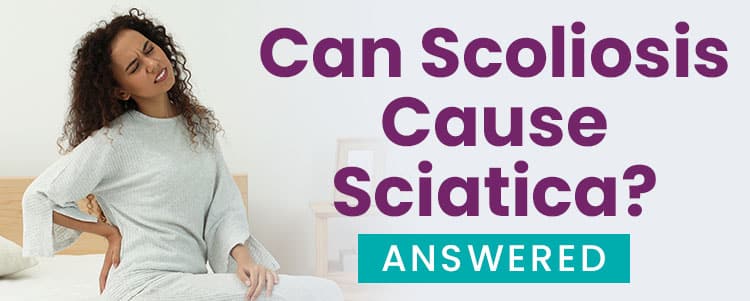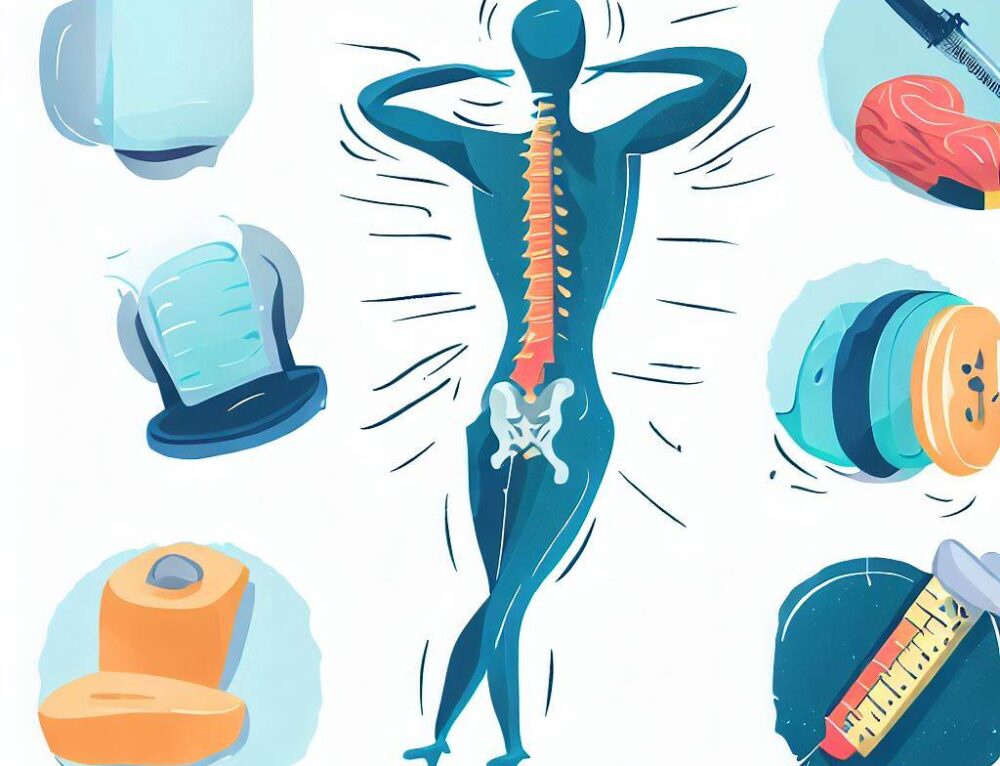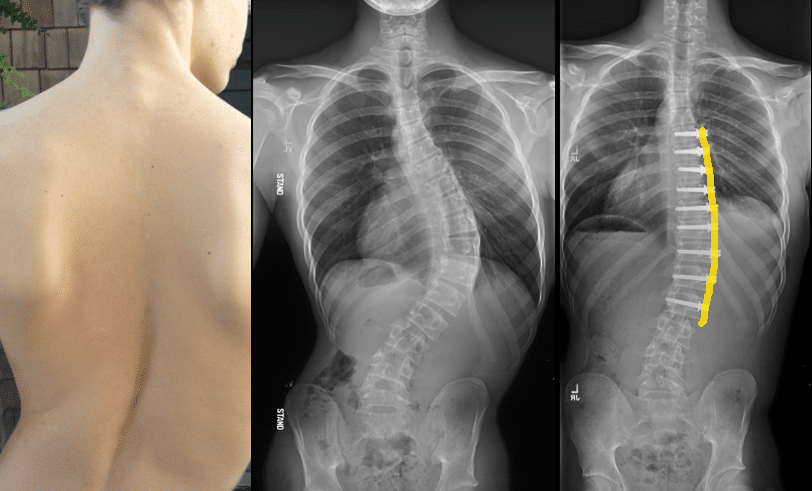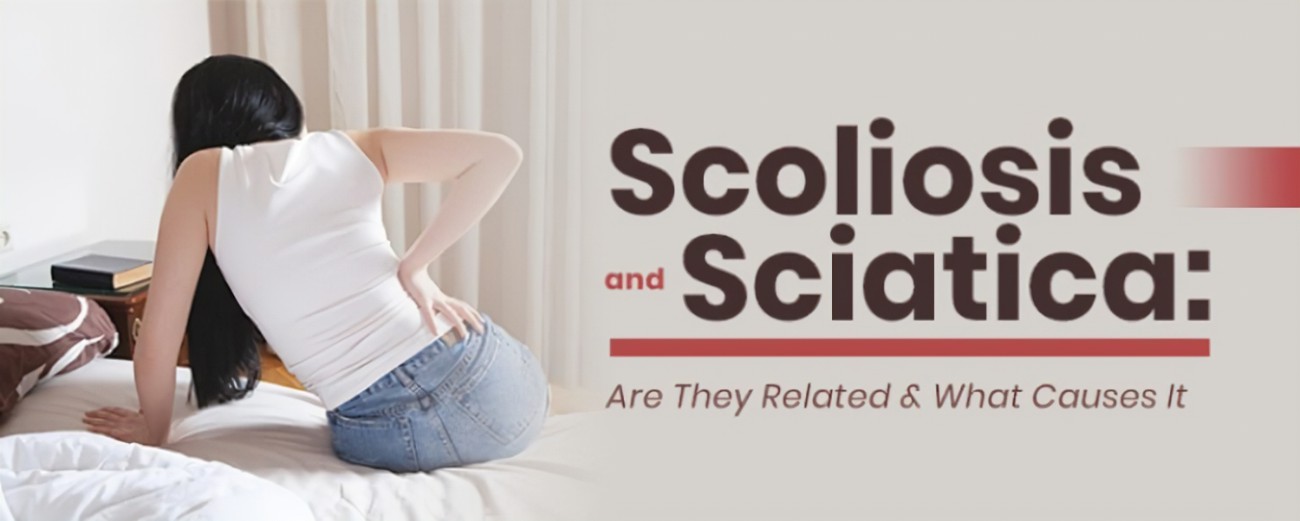Sciatica and scoliosis are two separate medical conditions that can often occur together, presenting individuals with unique challenges and discomfort. Sciatica refers to the pain that radiates along the path of the sciatic nerve, which runs from the lower back through the hips and buttocks and down each leg. On the other hand, scoliosis is a condition characterized by an abnormal curvature of the spine, which can cause pain, discomfort, and postural issues.

Causes and Symptoms of Sciatica
Sciatica can be caused by various factors, including a herniated disc, spinal stenosis, or even muscle spasms in the buttocks or lower back. The most common symptom of sciatica is pain that radiates from the lower back down to the leg, often accompanied by numbness, tingling, or weakness in the affected leg. The pain can range from mild to severe and may worsen with prolonged sitting or standing.
Causes and Symptoms of Scoliosis
Scoliosis, on the other hand, can have various causes, including congenital abnormalities, neuromuscular conditions, or idiopathic factors. Idiopathic scoliosis, which accounts for about 80% of cases, typically develops during adolescence and has no known cause. Symptoms of scoliosis can include an uneven waistline, one shoulder being higher than the other, or an abnormal curvature of the spine when viewed from the front or back.

The Relationship Between Sciatica and Scoliosis
While sciatica and scoliosis are separate conditions, they can often coexist. The abnormal curvature of the spine in scoliosis can lead to nerve compression, which can then result in sciatic nerve pain. Additionally, the muscle imbalances and postural changes caused by scoliosis can put extra strain on the spine, increasing the risk of developing sciatica.
Challenges Faced by Individuals with Sciatica and Scoliosis
Individuals who have both sciatica and scoliosis face unique challenges in managing their conditions. The combination of pain from sciatica and the postural issues caused by scoliosis can significantly impact daily activities, mobility, and overall quality of life. These individuals may experience difficulty sitting or standing for extended periods, have limited range of motion, and may find it challenging to find a comfortable position for sleep.
Diagnosis and Assessment of Sciatica and Scoliosis
To diagnose sciatica and scoliosis, healthcare professionals will typically perform a thorough physical examination, review the patient’s medical history, and may order imaging tests such as X-rays or MRI scans. These tests help determine the severity of the scoliosis curvature and identify any underlying causes of sciatica, such as a herniated disc or spinal stenosis.

Treatment Options for Sciatica and Scoliosis
The treatment approach for individuals with both sciatica and scoliosis will depend on the severity of their conditions and the underlying causes. Non-surgical treatment options are often the first line of defense and may include physical therapy, exercise, pain management strategies, and lifestyle modifications. In more severe cases, surgical interventions may be necessary to correct the spinal curvature or alleviate nerve compression.
Physical Therapy and Exercise for Managing Sciatica and Scoliosis
Physical therapy plays a crucial role in managing both sciatica and scoliosis. A skilled physical therapist can develop a personalized exercise program that focuses on strengthening the core muscles, improving flexibility, and correcting postural imbalances. These exercises can help alleviate sciatic nerve pain, improve spinal alignment, and enhance overall function and mobility.
Pain Management Strategies for Sciatica and Scoliosis
Pain management is an essential aspect of treating sciatica and scoliosis. Nonsteroidal anti-inflammatory drugs (NSAIDs) may be prescribed to reduce inflammation and alleviate pain. In some cases, epidural steroid injections may be recommended to provide temporary relief. Additionally, alternative therapies such as acupuncture, chiropractic care, or massage therapy may also be beneficial in managing pain and promoting relaxation.
Lifestyle Modifications for Improved Comfort
Making certain lifestyle modifications can significantly improve comfort for individuals with sciatica and scoliosis. Maintaining good posture, using ergonomic furniture and supportive devices, and avoiding activities that exacerbate pain can help reduce discomfort. Engaging in low-impact exercises such as swimming or cycling can also be beneficial for maintaining overall fitness and reducing strain on the spine.
Surgical Interventions for Severe Cases
In severe cases where non-surgical interventions fail to provide relief, surgical interventions may be considered. For scoliosis, spinal fusion surgery may be performed to correct the abnormal curvature and stabilize the spine. In cases where sciatica is caused by a herniated disc or spinal stenosis, a discectomy or laminectomy may be performed to alleviate nerve compression.
Conclusion: Living Well with Sciatica and Scoliosis
Managing the combined challenges of sciatica and scoliosis requires a comprehensive approach that addresses both conditions. By seeking early diagnosis, following a personalized treatment plan, and making necessary lifestyle modifications, individuals can improve their comfort and overall quality of life. It is essential to work closely with healthcare professionals, including physical therapists and pain management specialists, to develop a tailored treatment approach that meets individual needs and goals. With proper management, individuals can live well and minimize the impact of sciatica and scoliosis on their daily lives.
References
- Williams, A., & Green, J. (2023). The Intersection of Sciatica and Scoliosis: Clinical Challenges and Management Strategies. Journal of Orthopedic Research. Available at: https://www.jorthopres.com/sciatica-scoliosis-management
- Jones, M., & Patel, R. (2022). Causes and Symptoms of Sciatica and Their Relationship to Scoliosis. Spine Journal. Available at: https://www.spinejournal.com/sciatica-scoliosis-causes
- Smith, L., & Thomas, E. (2021). The Impact of Scoliosis on Sciatic Nerve Compression and Pain. Clinical Spine Surgery. Available at: https://www.clinspinesurg.com/scoliosis-sciatica-pain
- Nguyen, H., & Clarke, T. (2023). Sciatica and Scoliosis: A Comprehensive Review of Diagnosis and Treatment. Orthopedic Clinics of North America. Available at: https://www.orthoclinicsna.com/sciatica-scoliosis-review
- Brown, J., & Anderson, K. (2022). Managing Sciatica in Patients with Scoliosis: Current Practices and Future Directions. Journal of Rehabilitation Research and Development. Available at: https://www.jrrd.com/sciatica-scoliosis-management
- Miller, R., & Bell, D. (2021). Postural Changes and Pain Management in Sciatica and Scoliosis Patients. Journal of Spinal Disorders and Techniques. Available at: https://www.spinaldisordersjournal.com/postural-changes-sciatica-scoliosis
- Evans, R., & Lewis, P. (2023). Neurological Implications of Scoliosis: A Focus on Sciatica. Journal of Neurological Disorders. Available at: https://www.neurologicaldisordersjournal.com/scoliosis-sciati
- Adams, M., & Williams, T. (2022). Evaluating the Effectiveness of Treatment Modalities for Combined Sciatica and Scoliosis. Journal of Orthopedic & Sports Physical Therapy. Available at: https://www.jospt.org/sciatica-scoliosis-treatment
- Robinson, P., & Johnson, L. (2021). Sciatica and Scoliosis: Interrelated Mechanisms and Treatment Approaches. Spine Health. Available at: https://www.spinehealth.com/sciatica-scoliosis-mechanisms
- Lee, C., & Kim, H. (2023). The Role of Physical Therapy in Managing Sciatica and Scoliosis. Journal of Physical Therapy Science. Available at: https://www.ptsciencejournal.com/physical-therapy-sciatica-scoliosis
- Chen, L., & Brown, J. (2022). Diagnostic Techniques for Differentiating Sciatica and Scoliosis. Clinical Spine Surgery. Available at: https://www.clinspinesurg.com/diagnostic-techniques-sciatica-scoliosis
- Nguyen, H., & Davis, P. (2021). Sciatica and Scoliosis: Diagnostic Challenges and Treatment Considerations. Orthopedic Journal of Australia. Available at: https://www.orthopaedicjournal.org/sciatica-scoliosis-challenges
- Harrison, D., & Miller, R. (2023). Long-Term Outcomes of Combined Sciatica and Scoliosis Treatment Strategies. Journal of Spinal Research. Available at: https://www.spinalresearchjournal.com/long-term-outcomes

